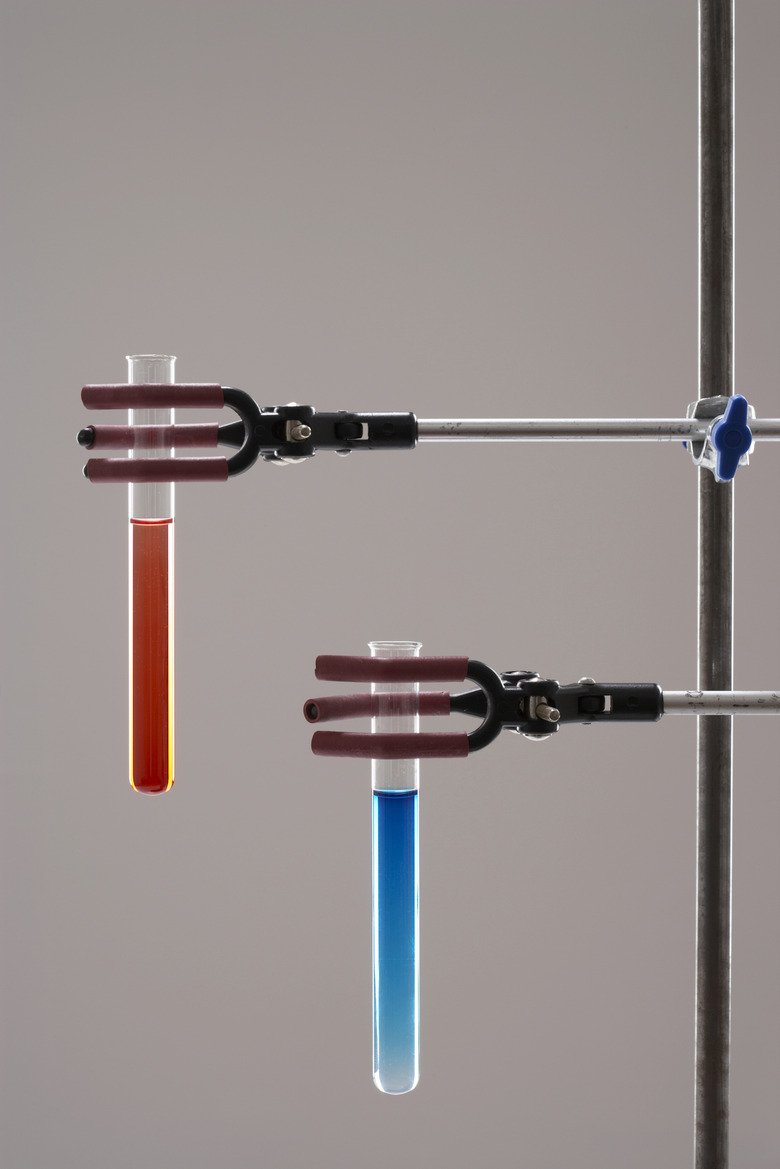The Effects Of Water During A Titration Experiment
In a typical titration, you add a known quantity of a reagent called a titrant to an analyte. The analyte is a solution of unknown concentration. As you slowly add the titrant, you can monitor for signs that a reaction is taking place. Water is necessary to create the solutions in titrations. Additionally, if you add water to a solution, you change the concentration of the solution. You must incorporate these changes into your calculations.
Changing the Concentration
Changing the Concentration
Adding water to a titrant or analyte will change the concentration of that solution. Each solution has a molarity, which is equal to the number of moles of a solvent per liter of solution. When you add water to a solution, the number of moles of the solvent stays the same while the volume increases. Therefore, the molarity decreases; the solution is diluted.
Adding Water to the Analyte
Adding Water to the Analyte
When you add water to the analyte, you dilute a solution of unknown molarity. This dilution ultimately does not affect the experimental results. The concentration of the analyte is still unknown. As long as your volume measurements are accurate, you can calculate the moles of the unknown compound after the titration is complete.
Adding Water to the Titrant
Adding Water to the Titrant
When you add water to the titrant, you dilute a solution of known molarity. This is important to factor into your calculations at the end of the titration; you must know the number of moles of the titrant used in the titration. As long as you incorporate the added water into your calculations, your results should be accurate. Also, because you dilute the titrant, it will take a larger amount of titrant to cause a change in the analyte. Therefore, the entire titration process will take longer.
The Properties of Water
The Properties of Water
Most titrations depend on precise pH measurements. Water has pH of seven, which is neutral. When you add it to an acid or base, it dilutes that solution and brings the pH closer to seven. As long as you account for this dilution in your titration calculations, the addition of water should not cause errors in your results.
Cite This Article
MLA
Murmson, Serm. "The Effects Of Water During A Titration Experiment" sciencing.com, https://www.sciencing.com/the-effects-of-water-during-a-titration-experiment-12072241/. 21 July 2017.
APA
Murmson, Serm. (2017, July 21). The Effects Of Water During A Titration Experiment. sciencing.com. Retrieved from https://www.sciencing.com/the-effects-of-water-during-a-titration-experiment-12072241/
Chicago
Murmson, Serm. The Effects Of Water During A Titration Experiment last modified March 24, 2022. https://www.sciencing.com/the-effects-of-water-during-a-titration-experiment-12072241/
